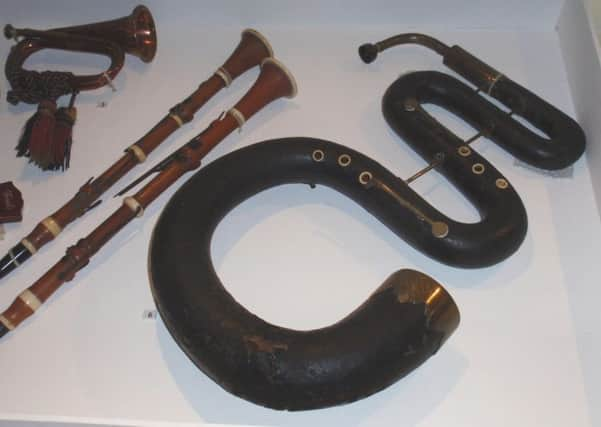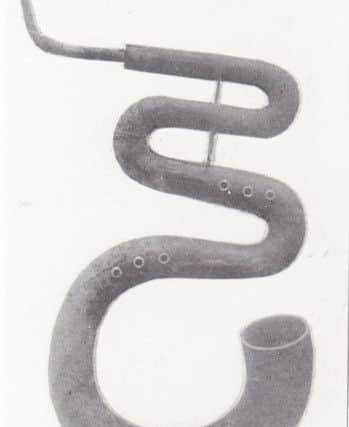The Serpent of Beeding Church


The first thing that grabbed my attention was a booklet entitled “The Serpent” with a picture of one on the front cover.
Excitedly, I bought their last copy and turned the pages.
There, on page 14, was a photograph entitled “Serpent, formerly played in Upper Beeding Church”, looking very like the photograph we have in our Local History Society’s collection.


Advertisement
Hide AdAdvertisement
Hide AdThe serpent was a musical instrument, invented in France about 1590, which reached England in the 17th century, being used to support the base line in church singing.
Most organs in small churches had been destroyed during the Commonwealth, so villages often had a small band that played in church and at weddings, dances and other celebrations, and these often included a serpent.
It was said to be fiendishly difficult to play and in inexpert hands could sound like “a very hungry, or angry, Essex calf.”
However, in professional hands it is more harmonious, as you can see and hear by looking on YouTube.
Advertisement
Hide AdAdvertisement
Hide AdIn time, the serpent was replaced by the tuba, a more robust instrument that was easier to play.
So what happened to Beeding’s serpent?
It was given to Potter’s Museum, in Bramber, where it was on display. It then moved with the rest of the museum to Arundel.
When I went there in 1985, there was just a space on the wall with a notice stating that it had been removed for repair.
After that, it was probably sold as it does not seem to have made it to Jamaica Inn with the rest of the museum collection, which has since been dispersed.
Advertisement
Hide AdAdvertisement
Hide AdBoth the Bramber and Arundel guide books described it thus: “A serpent, a musical instrument with four finger keys used in Beeding Church until about 1820. Invented at the end of the 16th century, it was soon adopted for use in church and military music. Until 1800, it had no keys, but by the mid-19th century nearly a dozen had been added. The tube is 7 feet 10 inches long, made with wooden sections and in two halves, the whole neatly glued together and covered in leather or fabric.”
There have been sporadic revivals of the instrument, and in 1990 there was a Serpent Celebration in London to commemorate the 400th anniversary of its invention, and the 150th anniversary of the Anaconda, the largest serpent in the world.
Every known serpent-player was invited and over 50 came from all over the world.
At a photo-call at London Zoo, highlights of the pieces played were “Tortoises” and “The Elephant” from Saint Saens’ Carnival of the Animals.